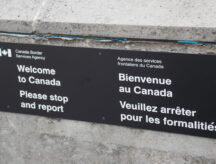Sean Fraser tables strategy for temporary residents who want to become Canadian permanent residents
Immigration Minister Sean Fraser has tabled a plan to expand pathways to permanent residence for international students and temporary foreign workers.
On September 20 during routine proceedings, Fraser tabled a strategy to expand transitions to permanent residence for foreign workers and international students with significant work experience in sectors with persistent labour shortages. The documents were released on the government website later in the day.
Discover if You Are Eligible for Canadian Immigration
And we’re back!
Kicked things off this session by presenting the ways our government is looking to expand pathways to permanent residency for temporary foreign workers & intl students. A special thanks to my colleague @randeepssarai for bringing forth this important motion. pic.twitter.com/6iT7yMgvDW
— Sean Fraser (@SeanFraserMP) September 20, 2022
The strategy offers a five-pillar approach that Immigration, Refugees, and Citizenship Canada (IRCC) will take to help temporary residents become Canadian permanent residents:
Pillar 1: The release says the government will use the existing immigration targets outlined in the 2022-2024 Immigration Levels Plan. Canada is expecting to welcome a record 431,645 newcomers this year. Before November 1, Fraser will have to table the new 2023-2025 Immigration Levels Plan.
Pillar 2: The government will reform the Express Entry system to allow IRCC to invite candidates based on an economic goal. IRCC had previously told CIC News that these new Express Entry draws are likely to start in early 2023.
Pillar 3: IRCC is planning to adopt the National Occupational Classification (NOC) 2021 on November 16. This new occupation classification system will allow 16 new occupations to become eligible for Express Entry, and remove three previously-eligible occupations. The government also aims to improve newcomers’ access to information to ensure that they meet the necessary qualifications and connect them to federal and provincial or territorial immigration programs; remove barriers for physicians and other ways to transition essential workers who are in high demand; and improve pilot programs to support permanent residency pathways for caregivers and agri-food workers.
Pillar 4: IRCC is working to increase French immigration outside Quebec and add a new Municipal Nominee Program. The government is also continuing to work with provinces, territories, and Canadian employers on pathways to permanent residence, such as the Provincial Nominee Program (PNP).
Pillar 5: IRCC is increasing processing capacity, improving client experience and modernizing the immigration system through technological improvements. The intent is to improve processing times to allow newcomers to become Canadian "as soon as possible."
Motion 44 called for "a comprehensive plan to expand the economic immigration stream" but given it is a private member's motion, Fraser was not legally obligated to respond at all.
NDP immigration critic Jenny Kwan said there is nothing new listed in what Fraser, who is from the Liberal Party, tabled in Parliament.
"What the Government provided is nothing more than the recycling of what is already in place. The Minister is not proposing anything new to the Immigration Levels plan to support the goals set out in Motion 44," Kwan wrote in an email to CIC News. "This so-called strategy lacks any real information or details of what a true comprehensive plan would entail."
Jasraj Singh Hallan, the shadow minister of immigration from the Conservative Party, echoed these sentiments in an email to CIC News.
"The fact that Canadians and newcomers had to wait over 120 days for this is embarrassing for the government," Hallan wrote. "Instead of providing details and tangible goals, the Minister has created a wish list of things that his department should have done long before M-44 was passed in the House."
Background
Fraser's plan comes in response to Motion 44 put forth by Randeep Sarai, the Liberal member of parliament for Surrey, British Columbia. The motion called for Fraser to make good on his mandate letter commitment for temporary residents. Specifically, the following six points were named in the motion:
- give more weight to in-Canada work experience under economic immigration programs and expand eligible occupational categories;
- examine evidence from other federal immigration programs;
- incorporate data on the labour market and skills shortages to base immigrant selection on persistent labour gaps;
- encourage immigrant retention in smaller communities and Francophone immigration outside Quebec;
- identify mechanisms to react quickly to changes in labour market needs and regional economic priorities; and
- specifically consider occupations and essential services such as health services, caregivers, agriculture, manufacturing, service, trades, and transportation.
Discover if You Are Eligible for Canadian Immigration
© CIC News All Rights Reserved. Visit CanadaVisa.com to discover your Canadian immigration options.
- Do you need Canadian immigration assistance? Contact the Contact Cohen Immigration Law firm by completing our form
- Send us your feedback or your non-legal assistance questions by emailing us at media@canadavisa.com







